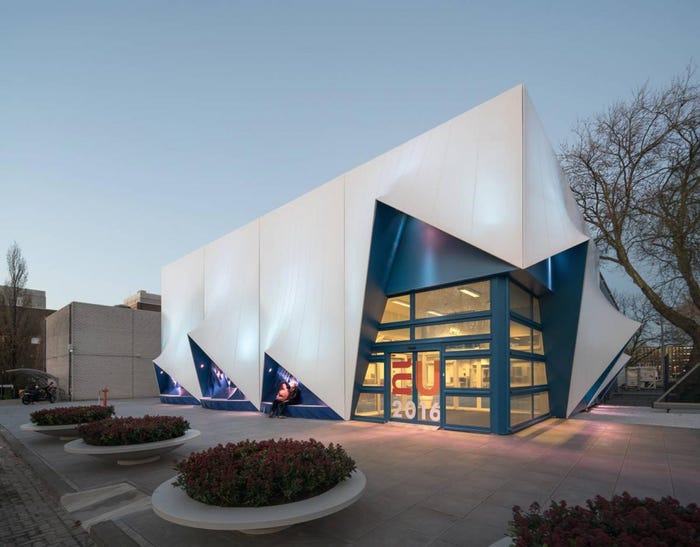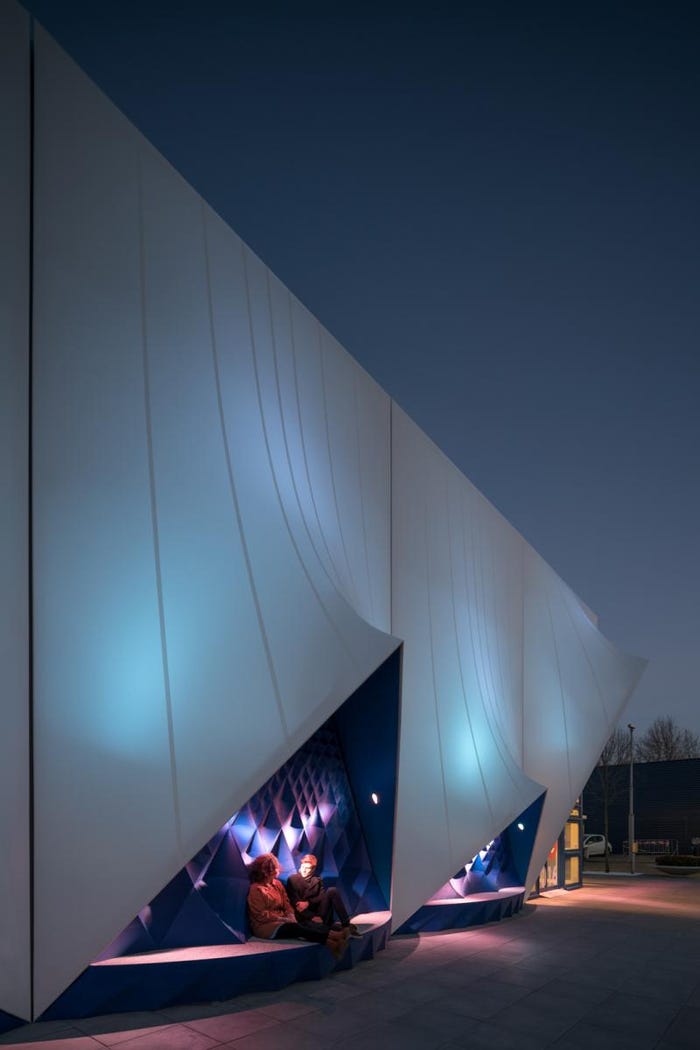On January 1, 2016, the Netherlands took over the rotating presidency of the Council of the European Union from Luxembourg. And, while the times may be turbulent, the Dutch appear to be sending the message that while they’re at the helm, the course sailed will be a steady one—at least if the choice of venue is anything to go by.
January 8, 2016
|
Image courtesy Ossip van Duivenbode. |
The National Maritime Museum in Amsterdam will be the backdrop for ministerial meetings during the Netherlands’ six-month term, while meetings of high-level officials will take place at the former naval yard next to the museum.
Here, a temporary structure called the Europe Building has been erected that has been fully equipped for official meetings organized by the ministries, complete with facilities for the press, as sustainably as possible. Solar panels have been installed, as have water taps, to discourage the use of bottled water, and the furnishings will be reused as much as possible in public sector buildings.
The Europe Building is unusual looking, to say the least. The entrance is constructed partly of 3D-printed bioplastic material designed by DUS Architects (Amsterdam, Netherlands). The printed elements can be fully recycled when the building is dismantled at the end of the Netherland’s term in July.
DUS has had earlier experience with 3D printing on a large scale.
|
Image courtesy Ossip van Duivenbode. |
At another location in Amsterdam, this firm of architects is currently 3D printing a traditional Amsterdam canal house, using a purpose-developed bioplastic material and an upscaled version of an Ultimaker 3D printer built into a sea container. According to these architects, 3D printing can have “huge implications for the way we fabricate things—for example the elimination of waste, transport costs and standardization of elements.” Aiming to discover just what 3D printing could bring to architecture, they decided to print a building to find out.
Their expertise and experience were put to good use in the design of the Europe Building.
The building façade features gracefully draped ‘sails’ that refer to the historical sailing ships that used to be built in this area. The sails’ folds create alcoves, which have been fitted with EU blue colored 3D-printed benches. The printed patterns build up from large to small and round to square and depict the variety and community of the EU countries.
Each seating element has been parametrically designed and fits perfectly within each alcove. They are prototypes, developed especially for the EU presidency, and printed locally with the XXL 3D printer being used for the 3D Print Canal House in Amsterdam, which is able to print elements measuring up to 2 x 2 x 3.5 meters. The bioplastic can be shredded and recycled for printing after the six-month Dutch presidency.
The project is the first commercial spin-off resulting from the collaborations on the 3D Print Canal House. The partners in the Europe Building project were: Actual, an Amsterdam-based start-up responsible for the parametric development & 3D printing; DUS (façade design); Neptunus (temporary structures), TenTech (engineering), Philips (light), and Heijmans (construction and assembly). Heijmans, an innovation-driven building company, is a special partner in this project.
About the Author(s)
You May Also Like




